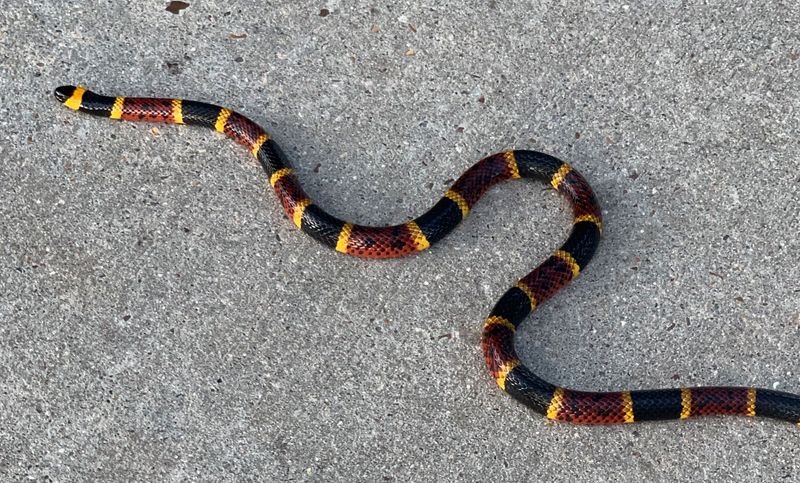📖 Table of Content:
North America hosts an impressive array of reptiles, some of which stand out as particularly dangerous. These fascinating creatures, while essential to their ecosystems, can pose serious risks to humans due to their venom, size, or aggressive behavior. Knowing more about these reptiles can help foster respect and encourage safe interactions in their natural habitats.
In this post, we rank the ten most dangerous reptiles found across North America. From highly venomous snakes like rattlesnakes and copperheads to the stealthy and powerful alligators that patrol wetlands, these animals command attention and caution. Their unique adaptations make them both awe-inspiring and potentially hazardous.
By understanding these reptiles and the risks they pose, you can better appreciate their role in the wild while staying safe during encounters. Join us as we explore the remarkable and dangerous reptiles that inhabit North America, showcasing their traits and why they deserve both our admiration and careful respect.
10. Eastern Diamondback Rattlesnake
The largest venomous snake in North America, the Eastern Diamondback Rattlesnake is known for its potent venom and iconic rattle. Found in the southeastern United States, it can reach lengths of up to eight feet.
Its striking diamond pattern serves as a warning to potential predators. Despite its fearsome reputation, this snake prefers to avoid humans and strikes only when threatened.
If you encounter one, give it plenty of space and respect its territory. Wear boots when hiking in its habitat to reduce the risk of bites.
9. American Alligator
An apex predator of the southeastern United States, the American Alligator is particularly common in Florida and Louisiana. This massive reptile can grow beyond 11 feet in length and weigh over 1,000 pounds.
Their powerful jaws can crush prey bones with ease, making them formidable hunters in marshes and swamps. Though attacks on humans are rare, they can occur when alligators feel threatened or provoked.
To stay safe, avoid swimming in waters known to be alligator habitats, especially at night when they are more active.
8. Western Diamondback Rattlesnake
Commonly found in the southwestern United States, the Western Diamondback Rattlesnake is recognized for its distinctive rattle and venomous bite.
This snake can reach lengths of up to seven feet and is easily recognized by its diamond-shaped markings and characteristic rattle sounds. It’s a solitary creature that avoids human contact, striking only when it feels cornered or surprised.
To avoid encounters, be vigilant when hiking in desert areas and always watch where you step or place your hands.
7. Copperhead Snake
Widely distributed across the eastern United States, Copperhead snakes are medium-sized venomous reptiles known for their distinctive copper-colored heads.
These snakes prefer wooded areas where their coloration provides excellent camouflage. Although their venom is not as potent as other snakes, bites can still be painful and require medical attention.
To minimize risk, wear protective footwear in wooded areas and keep an eye out for these well-camouflaged serpents.
6. Cottonmouth (Water Moccasin)
Known as the Cottonmouth or Water Moccasin, this venomous semi-aquatic snake is commonly found in the southeastern United States.
It is known for its aggressive behavior and distinctive white mouth, which it displays when threatened. These snakes often inhabit swamps, marshes, and slow-moving streams.
While they typically avoid human interaction, they can deliver a painful bite if provoked. Being vigilant around bodies of water and keeping a safe distance is advisable.
5. Gila Monster
One of the few venomous lizards in the world, the Gila Monster resides primarily in the southwestern United States and northern Mexico.
Despite its slow movement, the Gila Monster’s bite is powerful and delivers neurotoxic venom. Its vibrant black and orange patterns are a visual warning to predators and humans alike.
Handling or provoking these lizards can lead to dangerous bites. Observe them from a distance and appreciate their unique beauty without disturbing them.
4. Western Coral Snake
Small but highly venomous, the Western Coral Snake is native to the southwestern United States.
Its striking color pattern of red, yellow, and black bands serves as a warning to predators. Although rarely encountered, its venom is potent, affecting the nervous system.
If bitten, seek medical attention immediately. To avoid unnecessary risks, learn to distinguish it from non-venomous mimic species and be cautious while exploring its habitat.
3. Alligator Snapping Turtle
Large and powerful, the Alligator Snapping Turtle is native to rivers and lakes in the southeastern United States.
Known for its dinosaur-like appearance, this turtle has a strong beak capable of delivering a severe bite. They are mostly nocturnal and can be highly aggressive if threatened.
To avoid injury, do not attempt to handle or provoke them. Admire these ancient reptiles from a safe distance, respecting their role in aquatic ecosystems.
2. Black-tailed Rattlesnake
Found in the southwestern United States, the Black-tailed Rattlesnake is recognized for its distinctive black tail and bold yellowish-brown pattern.
This snake is often seen in mountainous regions and can grow up to five feet long. Its venom is potent, requiring medical treatment if bitten.
Encountering one in its rocky habitat can be thrilling yet dangerous. Always keep a respectful distance and be aware of your surroundings while hiking.
1. Texas Coral Snake
Brightly colored and small, the Texas Coral Snake is primarily found in Texas and parts of the southeastern United States.
With venom more potent than many larger snakes, it poses a serious threat despite its small size. The red, yellow, and black pattern is a classic warning sign.
If you come across one, do not try to handle it. Educate yourself on the differences between venomous and non-venomous snakes in its range to ensure safety.










